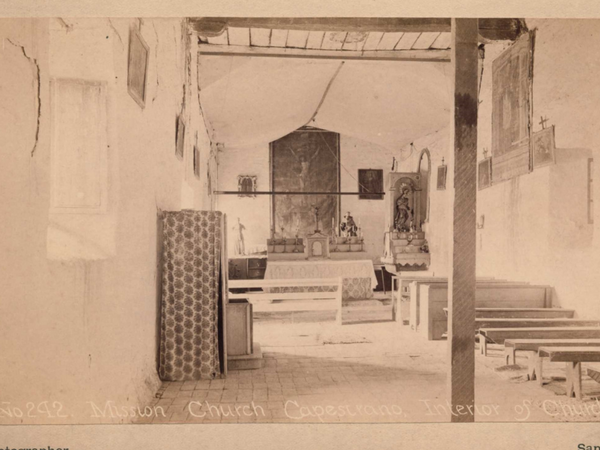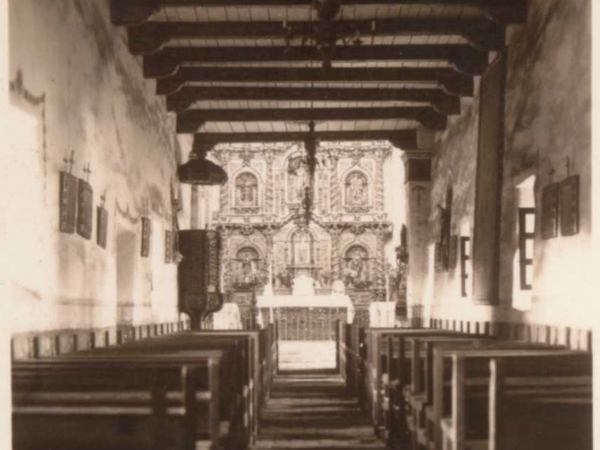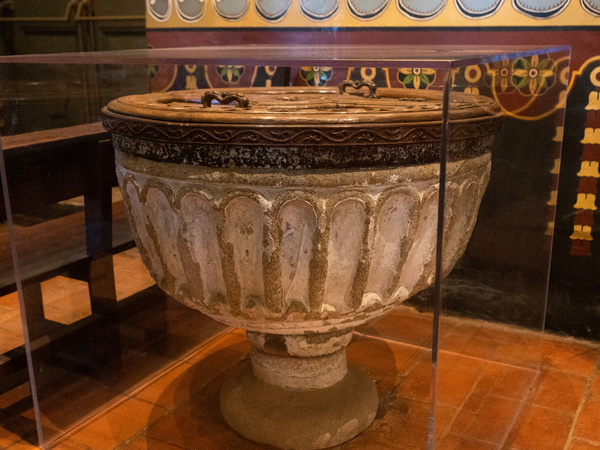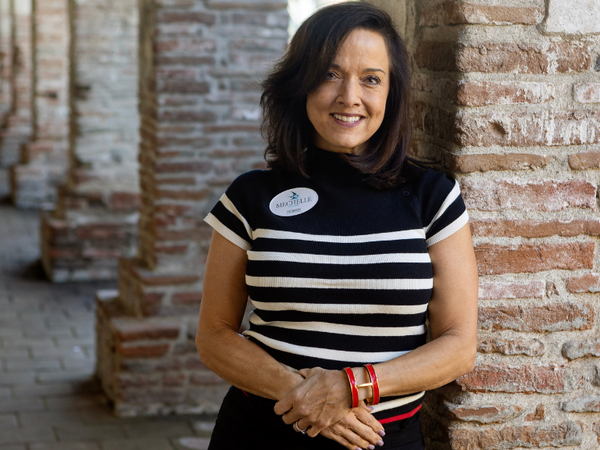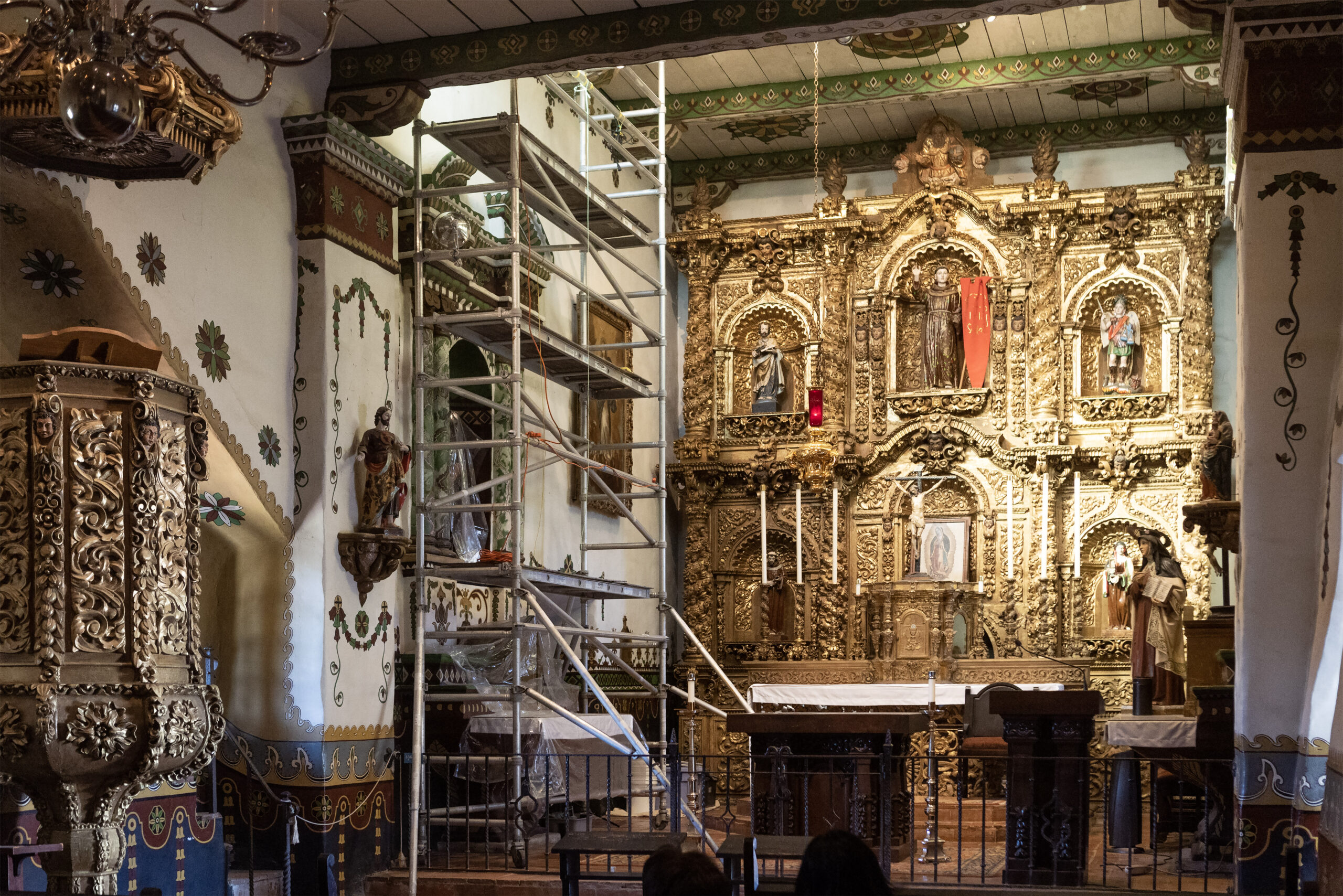Mechelle Lawrence Adams is the embodiment of stewardship. In her 20-year role as executive director of Mission San Juan Capistrano, she has been dedicated to preserving the “jewel of the missions” – and inviting visitors of all ages, backgrounds and faiths to witness its beauty.

SERRA CHAPEL UNDERGOES A MINOR RENOVATION PROJECT ON JAN. 20. THE 450-YEAR-OLD GOLDEN RETABLO IS SEEN IN THE BACKGROUND. PHOTO BY DREW KELLEY/DIOCESE OF ORANGE
And after two decades, from where does she continue to draw inspiration?
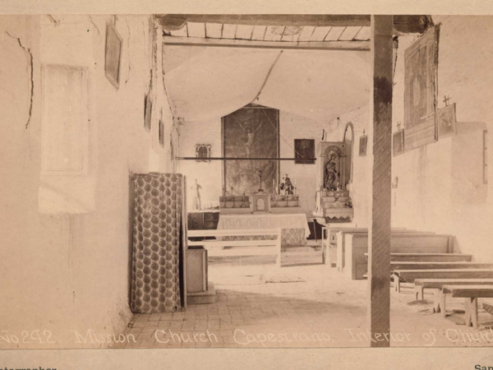
HISTORIC PHOTO OF SERRA CHAPEL.
Well, from the very grounds she first walked at the age of 10 during her first visit there, and the same grounds she now walks every day for her job. The very grounds where a saint once walked centuries ago.
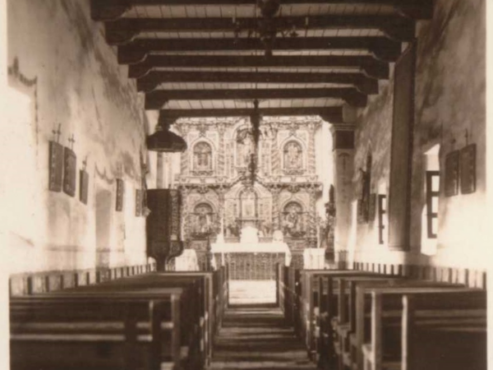
HISTORIC PHOTO OF SERRA CHAPEL. PHOTOS COURTESY OF MISSION SAN JUAN CAPISTRANO
St. Junipero Serra, a Franciscan missionary born in Spain, founded nine of California’s 21 missions, with Mission San Juan Capistrano being founded on Nov. 1, 1776.
And while the grounds were founded by a saint, they were built by Indigenous, baptized Catholics – the Acjachemen people.
“We look at their contributions as builders of the Mission with a sense of gratitude,” she said. “We strive to instill respect in everything we do for the original builders while also celebrating Serra’s founding of the Mission San Juan Capistrano.”
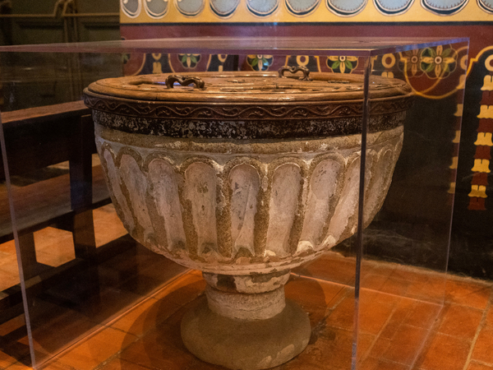
THE BAPTISMAL FONT IS BELIEVED TO HAVE BEEN ORIGINALLY USED IN THE GREAT STONE CHURCH. PHOTO BY DREW KELLEY/DIOCESE OF ORANGE
THE HEART OF THE MISSION
The heart of Mission San Juan Capistrano continues to be Serra Chapel, the only chapel still standing where St. Serra celebrated Mass.
Lawrence Adams said the Mission has records of the sacraments being celebrated there by St. Serra’s signature in the sacramental registries.
“It is the most historically significant chapel in California,” said Lawrence Adams, who works on behalf of the Mission Preservation Foundation.
Over the past 20 years, over 2 million dollars has been invested into the care and stewardship of Serra Chapel.
“Serra Chapel reflects a lot of things – early California history, the ongoing celebration of the sacraments and the containments within the architectural setting itself being historically significant,” added Lawrence Adams.
THE EVOLUTION OF SERRA CHAPEL
Lawrence Adams likens the life of Serra Chapel to the life of a human being. And just as we all do, the chapel has gone through many transformations.
It began with a birth – the Mission’s founding by St. Serra. After withstanding natural disasters, it started to age and during the secularization of the missions in the 1830s, came under private ownership before being returned to the Catholic Church President Abraham Lincoln in 1865.
During the time it was privately owned, the family living there used Serra Chapel to store hay for their horses. Since the hay needed to stay dry, the family kept the roof intact.
“If they hadn’t kept the roof intact,” said Lawrence Adams, “it probably would have been lost to time and to erosion.”
The chapel was in the period of decay when Fr. John O’Sullivan came upon the scene in 1910, and he aimed to bring chapel back into use. He started charging an admission fee to raise money for its care, thus beginning a 20th century era of preservation.
Many of the artifacts that are housed within the chapel today come from different eras because different improvements have happened over time.
For instance, the golden retablo altar piece is not original to the chapel. It was acquired in the early 1920s by Fr. O’Sullivan. But due to its height, the retablo didn’t fit inside the chapel.
So, Fr. O’Sullivan expanded the area behind the sacristy to fit the retablo. Today, the bottom of the steps before the altar is where the chapel once ended.
A PLACE IN POP CULTURE
Fr. O’Sullivan also started the annual swallow celebration at the Mission and with Leon René’s composition if the song, “When the Swallows Return to Capistrano” in 1939, the Mission found itself to be a tourist destination.
St. Serra could not have envisioned that the Mission would one day belong to the world.
When Lawrence Adams arrived in her position in 2003, she said it was very clear to her that there was not an understanding of what needed to be done to polish this gem and who its audience was.
MANY LENSES
“You have the faith-filled Catholic, you have the non-denominational Christian, you have the Jewish person who comes in because they love history and culture, you have the students who are coming to learn about California curriculum and you have the cancer sufferers looking for hope,” said Lawrence Adams.
In the 21st century, it has been about the preservation and stewardship of Serra Chapel, and for these last 20 years, its executive director has been emphasizing the importance of having many ambassadors.
And as it is, Serra Chapel always needs attention. From the walls to the floors to the artwork – conservation is ongoing. And strict guidelines are in place.
“Nothing gets moved without me knowing about it,” said Lawrence Adams. “Nothing goes out for conservation without oversight. Everything is numbered and in a database. Everything is insured. Everything is evaluated on an annual basis.”
It’s never been about “rebuilding or adding new things” according to Lawrence Adams. It has always been bringing the chapel back to its past glory.
“I’ve been here 20 years and guess what?” she asked. “We are starting to do projects twice. It’s time to go back to lighting because LED has emerged as a better environmentally cost-effective option.”
Visitors are diverse, multicultural and most welcome. There’s a five-language audio tour to prove it.
But for Orange County Catholics, Serra Chapel is where it all began. Lawrence Adams calls it the “mother house” and a place she thinks all Catholics should visit and pay homage to.
“When’s the last time they came in here and reflected on their faith journey?”
To make a donation to future preservation projects, visit www.missionsjc.com/donate

